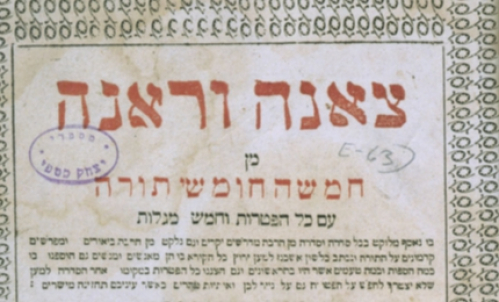A Glimpse into the Ruth Rubin Collection
by ELÉONORE BIEZUNSKI
These are a few songs found within the Ruth Rubin archive. The Ruth Rubin archive highlights the collection of over 1,900 Yiddish songs performed by some of the most extraordinary traditional singers of the 20th century, including Rubin herself.
Kum ikh tsu mayn gelibter froy – performed by Shmerke Kaczerginski (New York, 1948)
Shmerke Kaczerginski (1908-1954) was a Yiddish writer, poet and cultural worker who co-founded the avant-garde writers’ and artists’ group Yung Vilne in Vilna in the 1930s. He, along with the poet Avrom Sutzkever and others, was part of the so-called “Paper Brigade,” a group of forced laborers whom the Germans designated to sort Jewish cultural treasures at YIVO and other locations. He wrote his own songs and collected Holocaust folklore materials, particularly songs, and out of that work grew the collections Dos gezang fun vilner geto (The Song of the Vilna Ghetto, 1947) and Lider fun di getos un lagern (Songs of the Ghettos and Camps, 1948).
Here, he sings a humorous song about a man who comes back home to his wife to find things not quite as he left them.
We can find parallel songs in other traditions, such as “When I come home so drunk I couldn’t see,” “Four Nights Drunk” or the Anglo-Scottish ballad “Our Goodman.”
Di fayerdike libe – performed by Anna Berkowitz (Montréal, 1961)
Anna Berkowitz was extensively recorded by Ruth Rubin and is also featured in Cindy Marshall’s documentary A Life of Song: A Portrait of Ruth Rubin (1986).
Generally speaking, apart from their repertoire, we know relatively little about most of Ruth Rubin’s informants. As she thought that “folksongs belong to the folk,” her focus was on the songs themselves, and her interest in collecting data on the performers themselves was limited. One of the goals of our project is to supplement the performances with details on the singers’ lives through crowdsourcing information via the website.
“Di fayerdike libe” is a love song about a couple that is compelled to run away and elope in spite of their parents’ opposition to their union. It is one of two songs which have similar texts and different tunes – both are documented in Ruth Rubin’s field recordings.
Oy shtil un ruik – performed by Harry Ary (Montréal, 1955)
Harry Ary is one of the more remarkable and prolific singers recorded by Ruth Rubin. Although a website created and dedicated to Ary by his family is currently dormant, we know a little more about him thanks to an 2013 online interview with the late Winnipeg clarinetist Eli Herscovitch.
This song describes two lovers’ meeting in a graveyard; in the shtetl, a cemetery was one of the only places a young couple could be alone without being seen or heard.
Hob ikh a por oksn – performed by Ruth Rubin (New York, 1962)
“Hob ikh a por oksn” is one of the latter of “two categories, closest to the children's songs of Europe and other lands, […] the songs which use numbers directly or indirectly and the cumulative songs which build up or subtract.” Rubin writes about this song in her article, “Nineteenth-Century Yiddish Folksongs of Children in Eastern Europe.” (The Journal of American Folklore 65, no. 257, 1952, pp. 227–54): “the rhymes are devised and nonsensical in character. The oxen chop noodles, the goats rock the babies in the cradle, the cocks gather the kindling wood, and the bears sweep the house. We recall the ‘Musicians of Bremen,’ who, though a motley crew, …managed to frighten off a band of robbers!”
Discover even more music at Ruth Rubin’s Legacy of Yiddish Song concert on Sunday, December 23, 2018.


